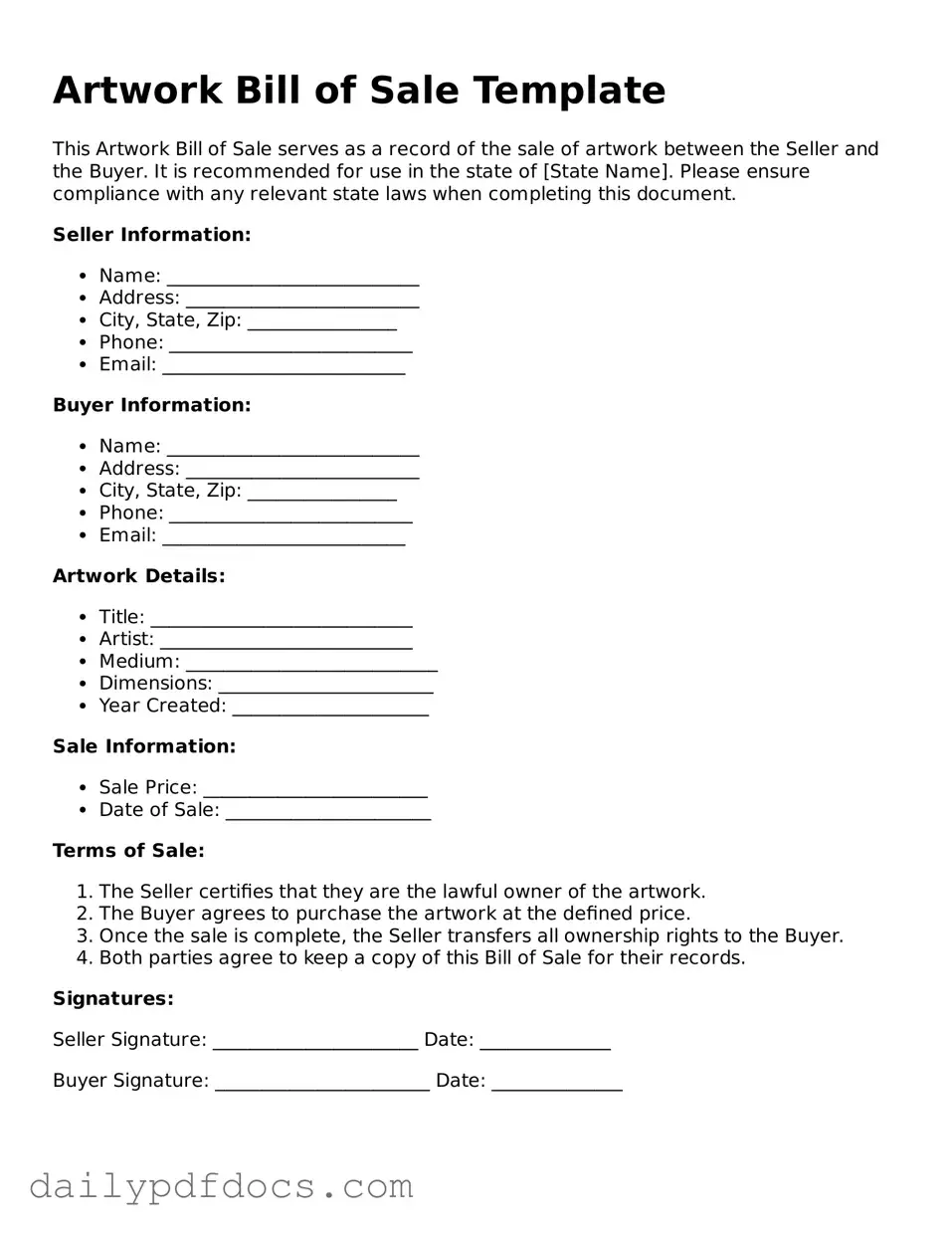An Artwork Bill of Sale is a legal document that serves as proof of the transfer of ownership of a piece of artwork from one party to another. It outlines essential details such as the buyer and seller's names, a description of the artwork, the sale price, and the date of the transaction. This document is important for both parties as it provides a record of the sale and can help avoid disputes in the future.
What information should be included in the Artwork Bill of Sale?
When creating an Artwork Bill of Sale, make sure to include the following information: the names and addresses of both the buyer and the seller, a detailed description of the artwork (including title, artist, medium, and dimensions), the sale price, and the date of the transaction. Additionally, both parties should sign the document to validate the sale.
Is it necessary to have the Artwork Bill of Sale notarized?
While it is not always required to have an Artwork Bill of Sale notarized, doing so can add an extra layer of protection. A notary public can verify the identities of the parties involved and witness the signing of the document. This can be particularly helpful if any disputes arise in the future, as it provides an official record of the transaction.
Can I use a generic Bill of Sale for artwork?
You can use a generic Bill of Sale, but it is often better to use a specific Artwork Bill of Sale. A generic form may not capture all the necessary details specific to art transactions, such as provenance or artist information. Using a tailored form ensures that all relevant aspects of the sale are covered, reducing the risk of misunderstandings.
What happens if I lose my Artwork Bill of Sale?
If you lose your Artwork Bill of Sale, it can complicate matters, especially if you need to prove ownership. If you are the seller, you may want to keep a copy of the document for your records. If you are the buyer and lose your copy, you can ask the seller for a duplicate. Maintaining good records is essential for both parties in any transaction.
